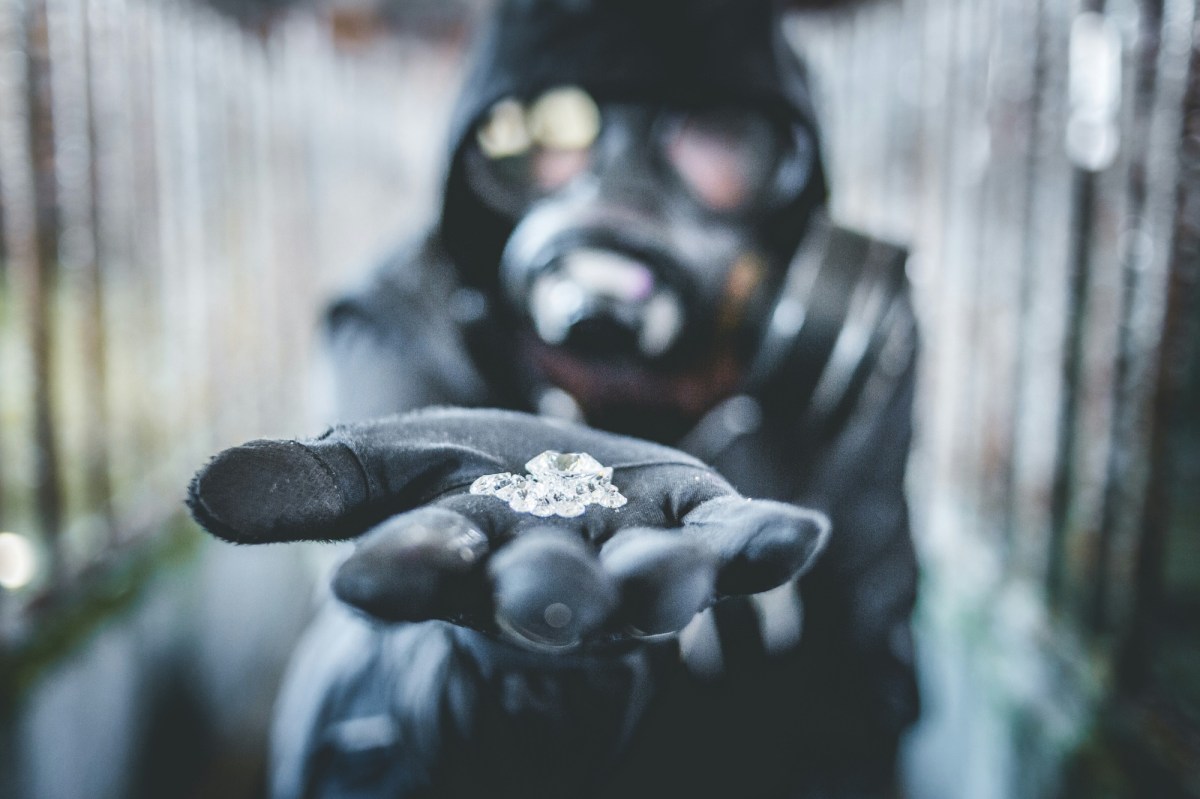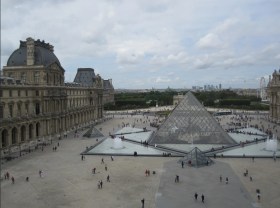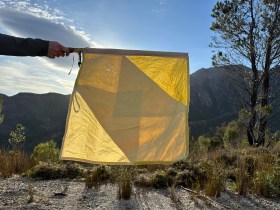The Louvre heist – quick links
ArtsHub turns to two experts to gauge their views of what will happen to the jewellery stolen from The Louvre in Paris on 19 October, as police go into double-speed trying to trace the thieves.
The Louvre heist: what an art crimes professor has to say
Associate Professor Donna Brett (University of Sydney), who specialises in the intricate tales of global art theft, believes there is more to this story than a simple robbery.
She tells ArtsHub: ‘It seems strange that they targeted those jewels. It’s easier to steal gems from a jeweler or an auction house rather than The Louvre.’
Brett continues: ‘The Mona Lisa, which was stolen 1911, was stolen for political reasons. Basically, these are the equivalent the crown jewels of France.’
She says that while there’s plenty of speculation at the moment, this week’s theft will certainly become one of history’s most talked about.
‘There are several different scenarios why,’ she continues. ‘One is that it’s stealing for order – stealing on commission.’ Brett adds that while this is rare, it does happen. ‘It’s a bit of an odd one, because it’s usually around fetishisation of things, but also someone who’s obviously got loads of money … to then keep them under their bed or in a safe. But there’s some sort of sense of absolute pleasure that they have it.’
Read: Brazen theft at The Louvre targets prized jewellery collection
Today, with free ports around the world housing art collections, this again is hard to trace and cultural history like this can be lost forever.
Brett adds of The Louvre heist, that with the ‘group of four people having cocked it up, dropping one [object] and leaving it behind, there are ramifications of that on a commissioned heist.’
Another possibility Brett lays on the table – and the most common today – is that, ‘they’ve been stolen for one of the criminal syndicates that operate through Europe. There is a lot of statistics around where some of this stuff ends up. It could be used as collateral for other criminal operations, in exchange for drugs and other illicit material. That’s really likely.’
The Louvre heist: what a jewellery insurance expert has to say
Jewellery insurance expert and Managing Director of Centrestone, Lachlan Renshaw tells ArtsHub: ‘There’s obviously a critical window here, where, if an arrest is not made quickly, it’s a very low percentage that the items are recovered.’
He continues: ‘Hopefully in the next few days they can recover the items, but if not, due to how identifiable those items are, they’ll be broken down into smaller pieces – the gemstones will be separated and possibly recut, so that they’re not identifiable, and then resold.’
Renshaw says that in terms of the timeline, ‘it could be days, weeks, months, years, that those stones are then “put on ice”.’
Are the recut stones traceable? He explains that an expert gemologist could identify the source of the stone – a Colombian emerald for example – but there is no legal requirement for gems to be sold with a certificate of provenance.
And indeed, when gems are recut they could be certified anew. ‘There is essentially no way to trace a gem once it has been recut,’ continues Renshaw, adding that Antwerp is one place in Europe that specialises in cutting gems.
He says that, absolutely, The Louvre will be making a claim on this robbery. ‘I’ve read a few things, that there was a lapse in the security, so an extensive investigation is needed to ascertain any negligence of care, before any claim is considered.’
Renshaw says the most recent spectacular theft – prior to this week’s Louvre heist – was the Dresden Green Vault heist in Germany in 2019, where royal jewels to the value of US$120 million were stolen. In 2022, 31 of the stolen items were recovered by the German authorities in Berlin, after talks with the lawyers of six men on trial for the theft.
And in terms of the most significant in France, it was the Harry Winston store heist in 2007-08, again in Paris, which was valued at US$90 million. The thieves were caught in 2015.
Unlike a painting which can’t be cut down, this is the upside of a stolen jewel. Renshaw says that getting the value back from art is harder than jewellery. Renshaw explains that while the thieves could get several million for the recut stones and gold, ‘those items are worth a lot more than those gold and gemstones put together, in terms of their cultural and historical significance’. This is the greater theft.
He concludes that in terms of jewellery insurance in Australia, theft is the smaller percentage over items being lost or broken.
Selling and tracing stolen art and antiquities
Brett says that, ‘like all art that’s stolen, it’s really hard to sell. If they get 10% to 20% of the value of the objects, they’re lucky.’
She says that the items are yet to appear on the Interpol website of stolen goods. ‘Every six months they have alerts for thefts … they’ll go to auction houses, and all over the place. Any legitimate buyer would go, “I better check these avenues”.’
‘The theft would also be listed with the FBI, because they’ve got a list of art thefts going back years that haven’t been solved, and to Scotland Yard, who have their own antiquities division,’ adds Brett.
The real problem lies with under-resourcing our museums
Brett tells ArtsHub: ‘Institutions like The Louvre, and but also here in Australia, are stretched and under resourced, and people just go, “Oh, what a shame”. The government’s quite happy to cut the costs on these sorts of things, like added security. But as soon as something happens, they want to throw money at it. You could resource these places properly now and avoid things like this happening.’
‘That needs to be attended to, because it’s not just objects. They are the cultural memory of our society. You want to have these things for the future generations,’ Brett concludes.
With a world consumed by global conflicts, we are quiet to say our museums are threatened in war zones. “We have to save our cultural heritage,” the population cries. But we don’t recognise in our own backyards, that we become a little bit complacent about the true value of those objects.
The fact that The Louvre heist happened during the day, Brett says, is not unusual. ‘It when there’s less security – they have to turn things off to let people in.’
She adds that during the pandemic, ‘the cases of theft from art museums and art in general, spiked enormously. This guy broke into a museum near Amsterdam, and stole a Van Gogh in the middle of the day. I mean, there was nobody there, and just walked out with it. He returned it not long after.’
Discover more arts, games and screen reviews on ArtsHub and ScreenHub.





